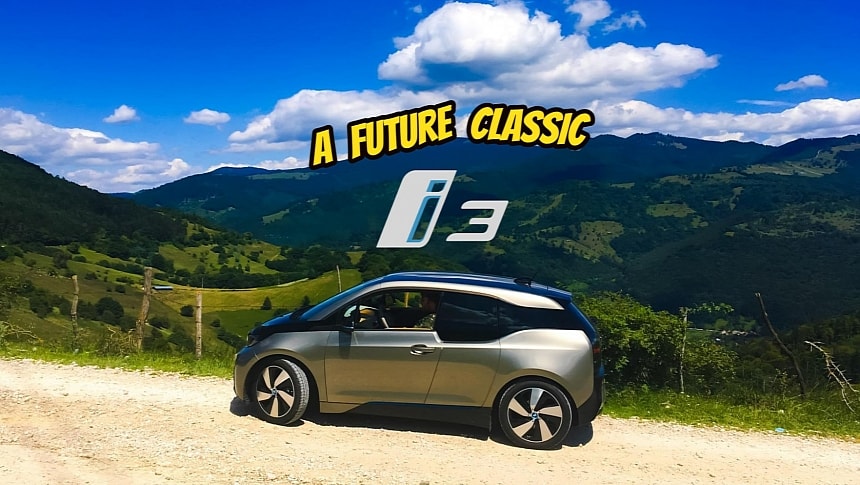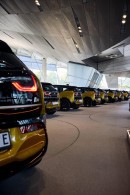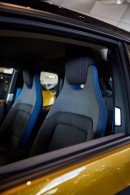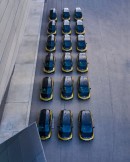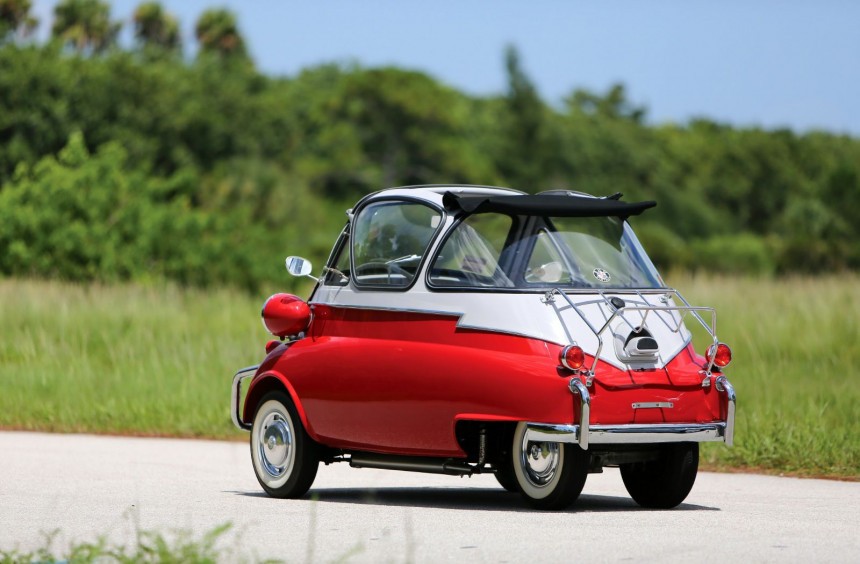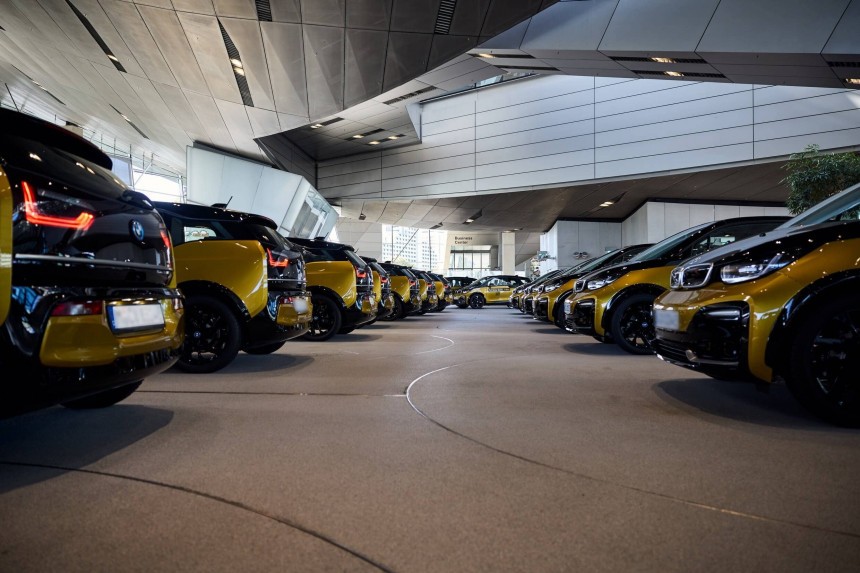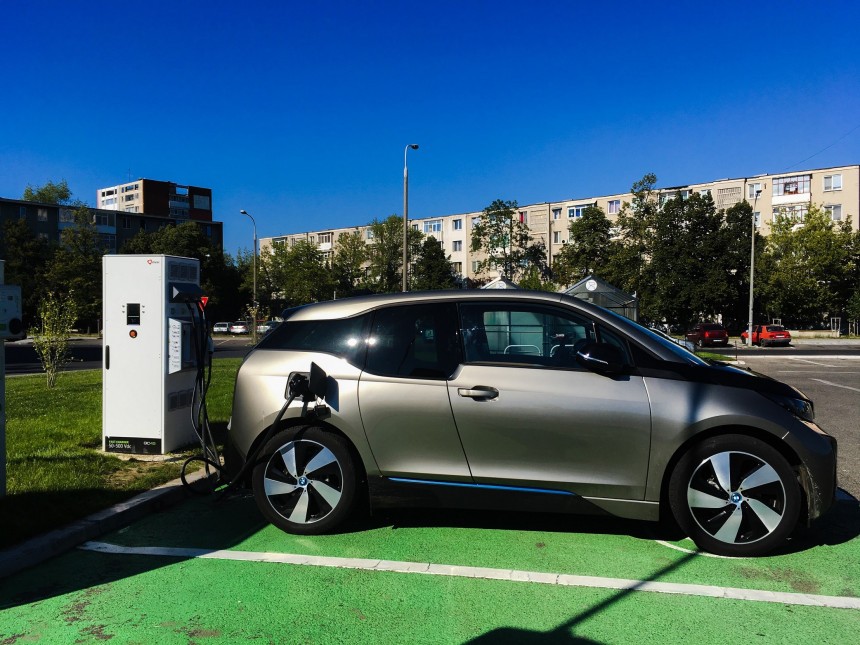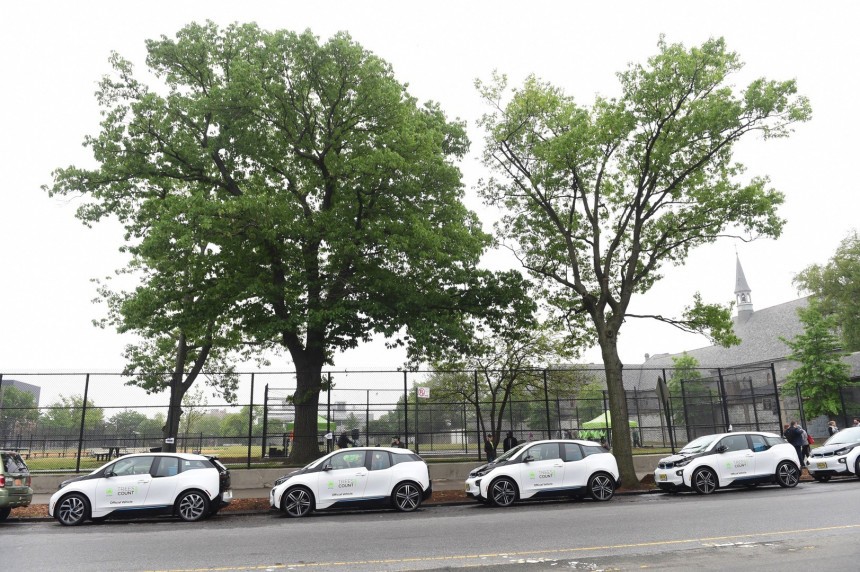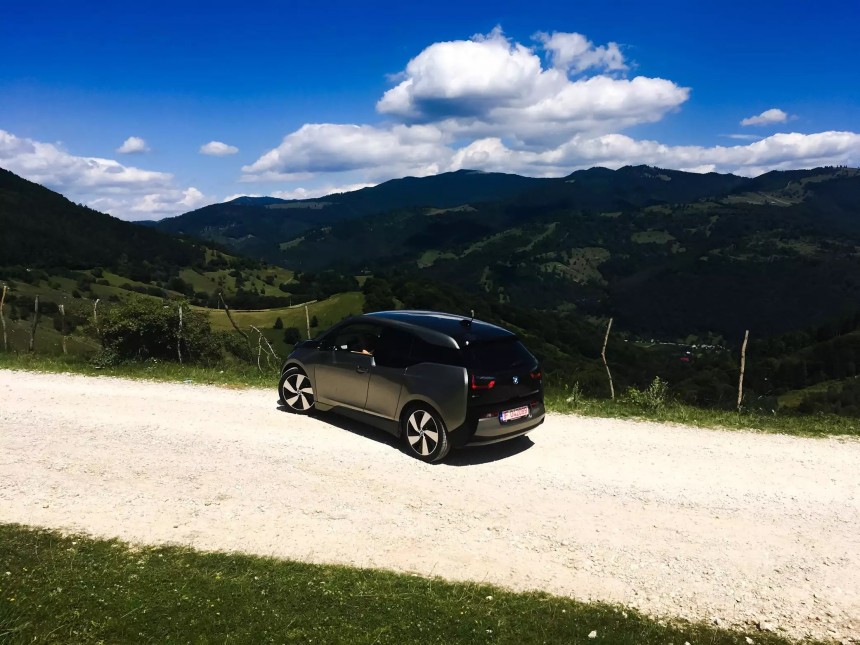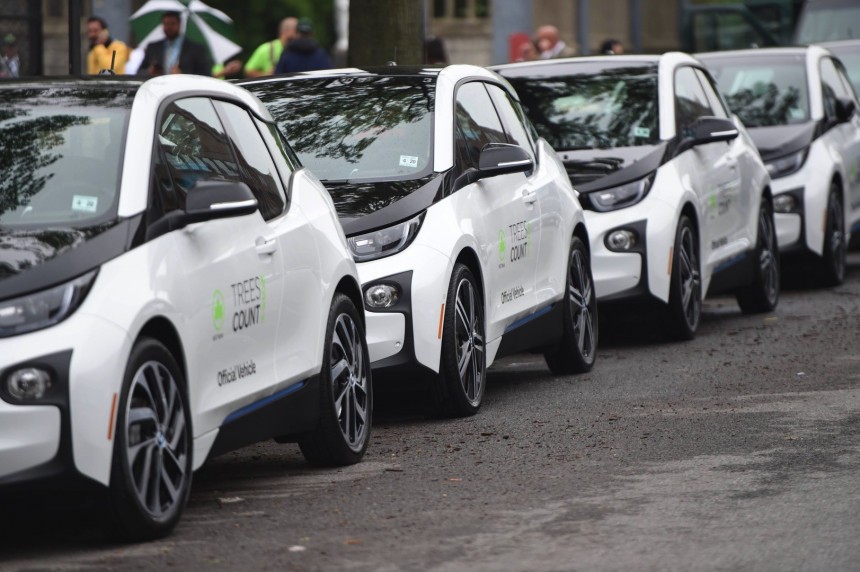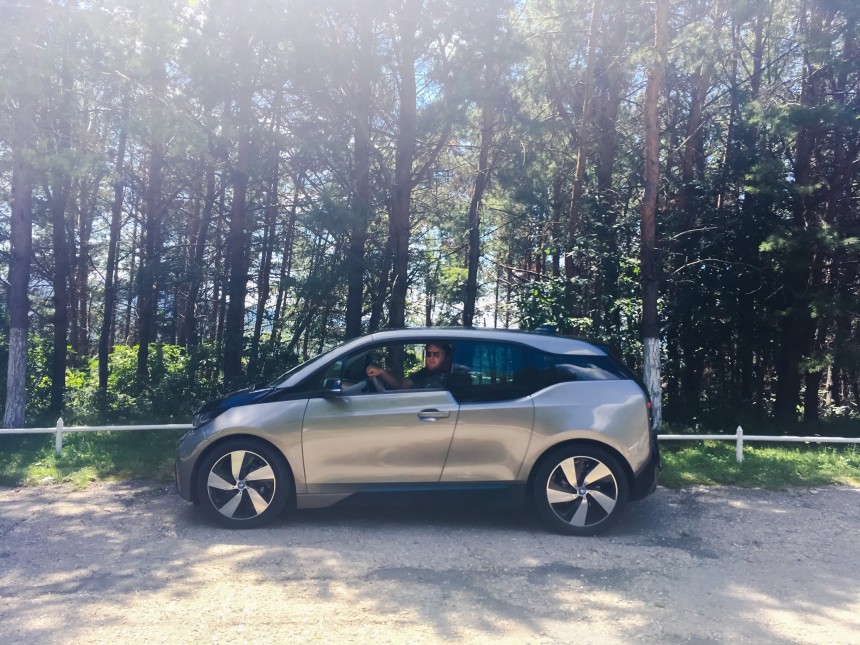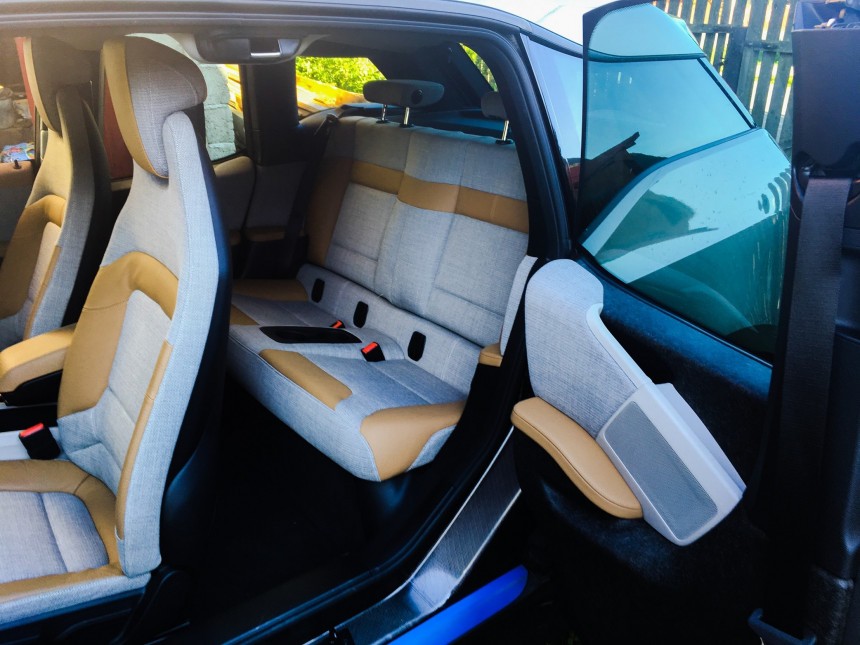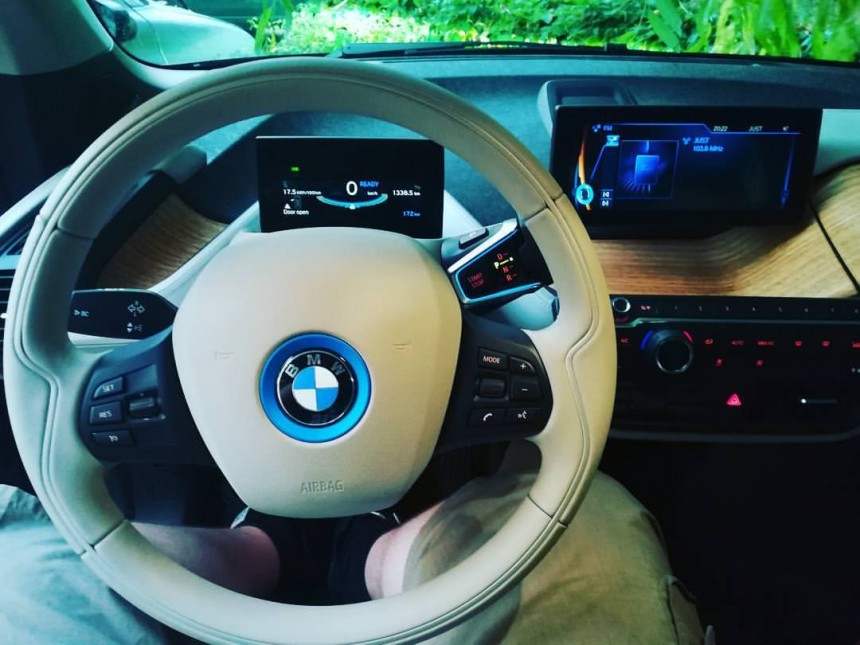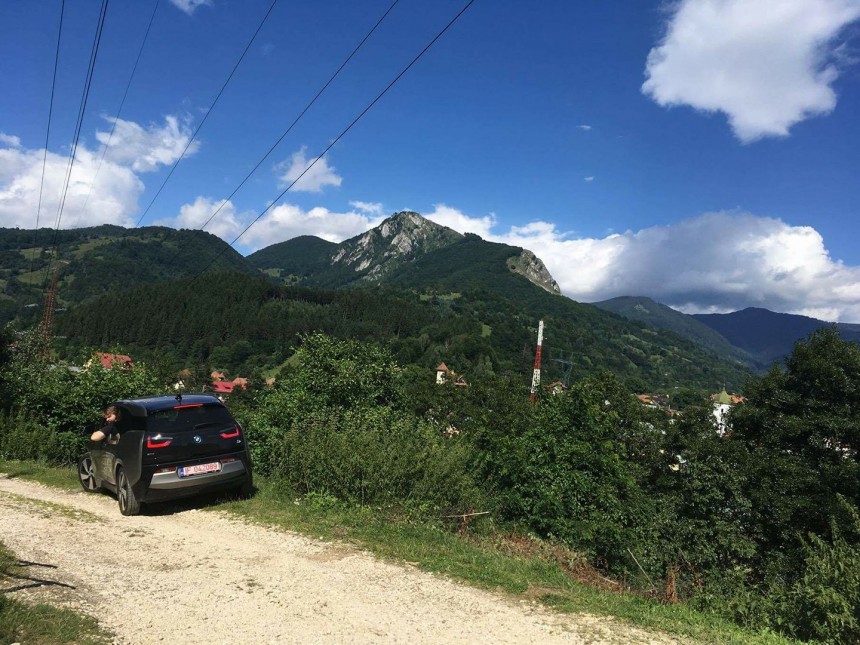"Zero-emission" sedans like the Lucid Air Sapphire or the Tesla Model S Plaid are all the rage nowadays. While nobody can deny that they are hardcore battery-powered cars, it's challenging to envision them as future classics. The BMW i3, however, has all the potential to skyrocket in value. Here's why.
This is going to be a long one. Please bear with me.
Cars, am I right? Who could have envisioned that in 2024, we would have so many drivetrains and body types to choose from but feel helplessly limited at the same time? It's a rather peculiar period, but alas. We can still make the best of it before automated driving and noiseless rides become the norm.
So, the i3. Doesn't it have a peculiar aura to it? I think it does. I also think that its avant-garde silhouette does great things for the discontinued Pikachu-fied Bimmer. That boxy but rounded shape (almost makes me think of a squircle) helps it remain interesting even as all-electric vehicles slowly yet surely become mainstream.
It has Isetta DNA, that's for sure. But it never was a car meant for environmentalists. In many ways, the i3 debuted as the anti-hippy green car.
But let's see what's what before summarizing this "i3 is going to be a future classic" as a wild prediction.
However, the i8 was misunderstood. It was expensive, but it was a very capable car when the battery and the gas tank were full. When not pushed to the limit, the exotic-wannabe i8 was very efficient and somewhat comfortable. It didn't have ventilated or massaging seats, but that wasn't much of an issue. Sadly, BMW refused to continue the experiment. It discontinued the economical grand tourer with wicked butterfly doors in 2020.
The i3, however, remained in production for two more years. BMW made over 250,000 copies between 2013 and 2022. Don't worry. It's unlikely that many will stand the test of time. Existing owners aren't particularly interested in transforming their EVs into collectibles. Some will store them, though. Those people will likely score a win.
Post-2022, the i3 continued to live on in China as a completely electric 3 Series tailor-made for the Asian market. However, the cute hatchback remains the real i3 everywhere else in the world. It has its own place inscribed in BMW's rich history. Fret not; we'll get the all-electric 3 Series as the i3, too, at some point. But we won't forget the OG that paved the way forward.
The EV that appeared three years after the Model S was officially launched may not have gotten the same accolade from its maker as the i8 did, but the petite hatchback with rear-hinged a-la-Mazda RX-8 doors has carved a path of its own in automotive history. You might want to pay attention because it could work out in your favor.
However, in 2013, the i3 was a big deal. It was the world's first premium car built from the ground up as an all-electric ride. Its looks, and especially the very narrow 155/70 R19 tires, attracted global attention. I was especially mesmerized by the huge piece of glass that covered the trunk and the taillights.
BMW didn't want to scare everyone away from its interesting experiment. So, it also offered the i3 REx, which added a two-cylinder gas engine that acted as a generator. It wasn't a plug-in hybrid like the i8 but a range-extended electric vehicle (REEV).
It was a smart implementation. The gas-powered engine worked at ideal rpm to charge the battery, which meant it never actually powered the wheels. The 170-hp motor placed on the rear axle did all the work, while no extra strain was being put on the small internal combustion powerplant. That translated into great efficiency and minimum emissions.
A peak torque of 184 lb-ft (250 Nm) available right from the first press of the accelerator pedal meant the i3 was a great car for urban dwellers. Those who commuted longer distances or wanted a car that could also serve as a weekend getaway ride had the i3 REx as the obvious option.
Keep in mind that the first-gen i3 had a maximum range of 99 miles (160 kilometers). By today's standards, that's comical. But back then, it was pretty much ok-ish.
BMW even conducted a study that revealed something interesting – most people only drove around 28 miles (45 kilometers) on a daily basis. It wanted to underline that the i3 would be perfect for those who commuted or stayed within city limits for prolonged periods.
The i3 also debuted with a curb weight of 2,635 lb (1,195 kg). To give a reference point, that's half the upcoming M5's weight.
Measuring 157.4 in (3,999 mm) in length, 69.8 in (1,775 mm) in width, 62.1 in (1,578 mm) in height, and with a wheelbase of 101.1 in (2,570 mm), the weird BMW that kickstarted the brand's all-electric era wanted to show that you can a posh commute without increasing your carbon footprint (if you truly cared about that concept).
Inside, the i3 presented the driver and the passengers with an almost futuristic lounge vibe. If you removed the steering wheel, the EV would have become a transportation pod, sort of what Zoox is doing in the US. It was still undeniably BMW, but it had a certain unconventional vibe to it.
The automaker used carbon fiber-reinforced plastic (CFRP) throughout the car. The four-seater EV's passenger cell, for example, was made from that lightweight but very strong material. That's why it was able to pass all the safety tests without having a B-pillar. Believe it or not, it was an industry-first move.
Couple that with the high-voltage lithium-ion battery, and what you get is a lively "zero-emission" hatchback that can drive pretty nicely.
In some markets, BMW even tried the Tesla approach. Customers were able to go online, spec their i3, and order it through BMW AG directly, and not a dealer.
They helped me discover and be enamored with marvels like the Lexus LFA, the Ferrari 458 Italia and 488 GTB, the Lotus Elise 111S, the Alfa Romeo Disco Volante (by Carrozzeria Touring), the V8-powered Audi RS4, the Ford Focus Mark1, the Ariel Atom, the Nissan GT-R, the Toyota Hilux (Invincible is a trim because of the TV show), the Porsche 918 Spyder, the Mercedes-Benz CLK63 AMG Black Series, the Maserati Quattroporte, the Lamborghini Aventador, The Ford F-150 Velociraptor, the Aston Martin DB9, the Ford Mondeo, and, yes, the Dacia Sandero.
I could add a few more vehicles to that list. We could spend more time strolling down memory lane. However, let's refocus.
But why bring up Top Gear at this point? Well, I had to! James May, also known as Captain Slow, bought a BMW i3. It was the REx version, and it replaced his Fiat Panda. He has always been more open to the idea of trying out new stuff, and May was also very knowledgeable. He was a rare type of gearhead because he used to have a Ferrari, a Tesla, a BMW, and even two motorcycles in his garage. That was why I was particularly fond of him. He taught me not to be a purist or a cultist.
Because I was a diehard Top Gear fan, a show I'm thankful for allowing me to indulge in a world that I had no access to as a young guy, I also watched The Grand Tour.
The trio's latest special takes them to a little-known African country called Mauritania. It occupies the 154th spot (out of 167) on the Prosperity Index. Considering that most of the country is made up of desert and only 4.5 million people live in an area of 397,956 square miles… Well, you get the picture. It's not like South Africa or Morocco. That part of the world used to be very important 1,000 years ago, though.
Besides the amazing scenery (which included one of the heaviest iron ore trains in the world), what struck me as odd was hearing Jeremy Clarkson complain about people who litter, the negative impact of plastic bottles left everywhere, and, believe it or not, explaining how global warming is displacing people from their homes and burying entire communities. He even mentioned that the Sahara is moving south at a rate of four meters per year because our planet is heating up.
That reminded me instantly about how, in the last episode of the first Grand Tour season, Clarkson and May compared their latest acquisitions: a VW Golf GTI and a BMW i3 REx, both being 2016 model-year units.
As expected, Clarkson, who often claimed that global warming wasn't too much of a threat and even hinted that it could be a made-up thing, tried to make May feel bad for getting a car that was subsidized by the British government. He also antagonized his colleague for taking advantage of free EV charging. Back then, the UK wanted to champion the EV movement. It introduced all sorts of subsidies, tax breaks, and incentives to get people into battery-powered cars.
The i3, even in its REx form, piqued my interest after seeing that May got one and was happy with it. A couple of months later, I asked BMW to loan me one for a trip. The Bavarians were very kind to honor my request, and I couldn't have been happier.
Don't get me wrong; it still looked somewhat weird. But it had that cool novelty factor about it. Come to think of it, maybe that's what's setting BMW apart from its peers. After all, it continued on this path by giving us the M3 and M4, the iX, the all-new 7 Series, the X7, and the 5 Series. Its design strategy may be divisive, but nobody can say that it isn't courageous.
A passionate BMW representative named Alex Seremet spent well over an hour with me to explain what the i3 was all about. My initial thoughts were that this car had to be an experiment. Somewhat unfairly, I compared it with the iPhone. It looked cool, and it was pricey. But it didn't do very much. Competitors offered much better products for less money.
That knowledgeable guy explained how BMW gathered some of its best engineers and product specialists, told them that they must come up with an all-electric car that embodied what BMW was all about while also showing the marque's commitment to a cleaner future, gave them the gift of very few restrictions, and instructed them to get on with it. The result? The i3 and the i8.
But the "i" division did even more than that. It also figured out what had to be done to ensure that the i3 wasn't just a quirky EV with not much real-world potential to it. They established very short supply and production chains and found clever ways to reduce water and energy consumption by 50 and 70 percent, respectively. Besides that, BMW had already invested in renewable electricity generation before the i3 production began.
I will admit that I did not appreciate those developments very much at that point because I just wanted to go and experience the car. In retrospect, I realize now that the Bavarians were very serious about their planet-friendly future.
However, it all made sense. This was a product that was supposed to be friendlier to the environment. So, BMW used recycled raw materials. Fret not; it wasn't completely made of repurposed plastic bottles. Most of the things you touched were still leather, wood, and wool. Moreover, only 25% of the plastic used in the cabin was made of recycled materials.
So, no, the i3's interior wasn't made of one man's trash that was presented to you as a treasure. Even better, the hatchback prompted BMW to develop a world-first commercial-grade recycling concept for carbon fiber-reinforced plastic components.
Do keep in mind that all this was happening right when adaptive cruise control with lane centering was considered innovative. Today, there are robotaxis roaming many cities around the world. Those innovations really showed BMW's commitment to doing better.
We finish talking, and I can finally go. The i3 I had wasn't like James May's. It didn't have the range extender. My knowledge about EVs was also limited. What I knew for sure was that I had to watch the battery charge level and stop to replenish the energy storage unit at some point, somewhere.
So, I started shy. Turned on Eco Pro+, which doesn't let you use the A/C or go over 53 mph (85 kph), and headed for the mountains for a much-needed getaway. Things went much better than expected. I had a charging stop programmed, but it wasn't needed. I still stopped because I didn't know what to expect.
Those seats looked uncomfortable at first sight, but they were unexpectedly nice. The view out of the car was great, the motor didn't make any weird sounds, and the narrow tires didn't make the road feel terrible or the EV unstable. It was a surprise, a great one!
Considering that the highway experience was perfectly adequate and the i3 didn't show any signs of weakness, I even took it on some unpaved backroads. It went great.
I even had some friends check it out, and they liked it. One thing that I despised was the halogen high beams. I will never understand why some manufacturers chose to cut costs that way.
I wouldn't have bought it for myself. However, someone who already had an M3 or a 5 Series in their garage could have comfortably done so. It would have served them well as a posh, environmentally-friendly commuting appliance that had some party tricks to impress coworkers, friends, or business partners.
My perception is that BMW hasn't lost the plot. But it decided that innovation isn't worth the hassle for the time being. That's why it makes EVs without a frunk. That's why the i4 drivetrain was stuck into the heavier i5. That's why BMW can't yet compete with Lucid or Tesla when it comes to power, efficiency, and charging. Things might change next year because the Neue Klasse platform should bring impressive rides. Those underpinnings should bring us a 1,341-hp soundless Bavarian monster.
To conclude, the i3 was never meant to be a "zero-emission" mile-muncher. However, it became an iconic product that displayed the courage to go beyond the limits of a very conservative industry. BMW wasn't afraid of diluting its image a bit.
The i3 wasn't just an exercise. The Bavarians continued building on that legacy. In 2021, one year before pulling the plug on the i3, BMW tested bidirectional charging on 50 customer models.
More recently, they even repurposed around 40 i3 high-voltage batteries to help Coldplay perform their live global tour without interruption. That proved the little EV was able to keep its sustainable attribute even after not being a car any longer. That's what you want from EVs. They shouldn't be smartphones on wheels that you just discard after a new one appears.
In a future world where we won't be able to drive internal combustion engine-powered cars on public roads anymore (whenever that will happen), the original i3 (and maybe even the updated i3s) will stand as a beacon of transformation. That aura of early innovation will give it collectible status and help it appreciate rather quickly. It might take a few years and maybe even a decade or two, but mark my words: it will happen. The BMW i3 will become a classic car.
Cars, am I right? Who could have envisioned that in 2024, we would have so many drivetrains and body types to choose from but feel helplessly limited at the same time? It's a rather peculiar period, but alas. We can still make the best of it before automated driving and noiseless rides become the norm.
So, the i3. Doesn't it have a peculiar aura to it? I think it does. I also think that its avant-garde silhouette does great things for the discontinued Pikachu-fied Bimmer. That boxy but rounded shape (almost makes me think of a squircle) helps it remain interesting even as all-electric vehicles slowly yet surely become mainstream.
It has Isetta DNA, that's for sure. But it never was a car meant for environmentalists. In many ways, the i3 debuted as the anti-hippy green car.
Time flies
BMW officially launched the i3 over a decade ago, in the summer of 2013. One year later, the gorgeous i8 joined the battery-electric hatchback in becoming the representatives of the Bavarian brand's futuristic division. The i8 was a plug-in hybrid, but it looked like a halo ride. Many believed it was underpowered because it hid a 1.5-liter three-cylinder MINI engine behind the driver.However, the i8 was misunderstood. It was expensive, but it was a very capable car when the battery and the gas tank were full. When not pushed to the limit, the exotic-wannabe i8 was very efficient and somewhat comfortable. It didn't have ventilated or massaging seats, but that wasn't much of an issue. Sadly, BMW refused to continue the experiment. It discontinued the economical grand tourer with wicked butterfly doors in 2020.
The i3, however, remained in production for two more years. BMW made over 250,000 copies between 2013 and 2022. Don't worry. It's unlikely that many will stand the test of time. Existing owners aren't particularly interested in transforming their EVs into collectibles. Some will store them, though. Those people will likely score a win.
The EV that appeared three years after the Model S was officially launched may not have gotten the same accolade from its maker as the i8 did, but the petite hatchback with rear-hinged a-la-Mazda RX-8 doors has carved a path of its own in automotive history. You might want to pay attention because it could work out in your favor.
An unexpected car
Today, the i3 doesn't seem that unconventional any longer. BMW gave us the iX (which, if you think about it, could be the i3's spiritual successor) and even brought forward the iCircular concept that launched rumors about the hatchback's return in a reinterpreted and upgraded form.However, in 2013, the i3 was a big deal. It was the world's first premium car built from the ground up as an all-electric ride. Its looks, and especially the very narrow 155/70 R19 tires, attracted global attention. I was especially mesmerized by the huge piece of glass that covered the trunk and the taillights.
BMW didn't want to scare everyone away from its interesting experiment. So, it also offered the i3 REx, which added a two-cylinder gas engine that acted as a generator. It wasn't a plug-in hybrid like the i8 but a range-extended electric vehicle (REEV).
A peak torque of 184 lb-ft (250 Nm) available right from the first press of the accelerator pedal meant the i3 was a great car for urban dwellers. Those who commuted longer distances or wanted a car that could also serve as a weekend getaway ride had the i3 REx as the obvious option.
Keep in mind that the first-gen i3 had a maximum range of 99 miles (160 kilometers). By today's standards, that's comical. But back then, it was pretty much ok-ish.
BMW even conducted a study that revealed something interesting – most people only drove around 28 miles (45 kilometers) on a daily basis. It wanted to underline that the i3 would be perfect for those who commuted or stayed within city limits for prolonged periods.
The i3 also debuted with a curb weight of 2,635 lb (1,195 kg). To give a reference point, that's half the upcoming M5's weight.
Measuring 157.4 in (3,999 mm) in length, 69.8 in (1,775 mm) in width, 62.1 in (1,578 mm) in height, and with a wheelbase of 101.1 in (2,570 mm), the weird BMW that kickstarted the brand's all-electric era wanted to show that you can a posh commute without increasing your carbon footprint (if you truly cared about that concept).
The automaker used carbon fiber-reinforced plastic (CFRP) throughout the car. The four-seater EV's passenger cell, for example, was made from that lightweight but very strong material. That's why it was able to pass all the safety tests without having a B-pillar. Believe it or not, it was an industry-first move.
Couple that with the high-voltage lithium-ion battery, and what you get is a lively "zero-emission" hatchback that can drive pretty nicely.
In some markets, BMW even tried the Tesla approach. Customers were able to go online, spec their i3, and order it through BMW AG directly, and not a dealer.
A quick detour
I grew up with Top Gear. I watched what those three British blokes did religiously. That should tell you one thing: my young mind was shaped by three men who spent their time traveling the world and fooling around with pricey cars.I could add a few more vehicles to that list. We could spend more time strolling down memory lane. However, let's refocus.
But why bring up Top Gear at this point? Well, I had to! James May, also known as Captain Slow, bought a BMW i3. It was the REx version, and it replaced his Fiat Panda. He has always been more open to the idea of trying out new stuff, and May was also very knowledgeable. He was a rare type of gearhead because he used to have a Ferrari, a Tesla, a BMW, and even two motorcycles in his garage. That was why I was particularly fond of him. He taught me not to be a purist or a cultist.
Because I was a diehard Top Gear fan, a show I'm thankful for allowing me to indulge in a world that I had no access to as a young guy, I also watched The Grand Tour.
The trio's latest special takes them to a little-known African country called Mauritania. It occupies the 154th spot (out of 167) on the Prosperity Index. Considering that most of the country is made up of desert and only 4.5 million people live in an area of 397,956 square miles… Well, you get the picture. It's not like South Africa or Morocco. That part of the world used to be very important 1,000 years ago, though.
Besides the amazing scenery (which included one of the heaviest iron ore trains in the world), what struck me as odd was hearing Jeremy Clarkson complain about people who litter, the negative impact of plastic bottles left everywhere, and, believe it or not, explaining how global warming is displacing people from their homes and burying entire communities. He even mentioned that the Sahara is moving south at a rate of four meters per year because our planet is heating up.
As expected, Clarkson, who often claimed that global warming wasn't too much of a threat and even hinted that it could be a made-up thing, tried to make May feel bad for getting a car that was subsidized by the British government. He also antagonized his colleague for taking advantage of free EV charging. Back then, the UK wanted to champion the EV movement. It introduced all sorts of subsidies, tax breaks, and incentives to get people into battery-powered cars.
The i3, even in its REx form, piqued my interest after seeing that May got one and was happy with it. A couple of months later, I asked BMW to loan me one for a trip. The Bavarians were very kind to honor my request, and I couldn't have been happier.
Understanding the quiet and somewhat clean revolution
I still remember the moment when I first set eyes on this cute car. It immediately stood out in a parking lot full of sedans, CUVs, and SUVs that looked boring when the i3 was there. It simply was something else.A passionate BMW representative named Alex Seremet spent well over an hour with me to explain what the i3 was all about. My initial thoughts were that this car had to be an experiment. Somewhat unfairly, I compared it with the iPhone. It looked cool, and it was pricey. But it didn't do very much. Competitors offered much better products for less money.
That knowledgeable guy explained how BMW gathered some of its best engineers and product specialists, told them that they must come up with an all-electric car that embodied what BMW was all about while also showing the marque's commitment to a cleaner future, gave them the gift of very few restrictions, and instructed them to get on with it. The result? The i3 and the i8.
But the "i" division did even more than that. It also figured out what had to be done to ensure that the i3 wasn't just a quirky EV with not much real-world potential to it. They established very short supply and production chains and found clever ways to reduce water and energy consumption by 50 and 70 percent, respectively. Besides that, BMW had already invested in renewable electricity generation before the i3 production began.
I will admit that I did not appreciate those developments very much at that point because I just wanted to go and experience the car. In retrospect, I realize now that the Bavarians were very serious about their planet-friendly future.
A recycled BMW. What?
While sitting in that parking lot and listening to what the BMW rep wanted me to know before driving off, one thing that struck me was the idea that the interior of this futuristic transportation pod was made up of… Garbage. I don't know about you, but I would have never associated BMW with discarded stuff.So, no, the i3's interior wasn't made of one man's trash that was presented to you as a treasure. Even better, the hatchback prompted BMW to develop a world-first commercial-grade recycling concept for carbon fiber-reinforced plastic components.
Do keep in mind that all this was happening right when adaptive cruise control with lane centering was considered innovative. Today, there are robotaxis roaming many cities around the world. Those innovations really showed BMW's commitment to doing better.
We finish talking, and I can finally go. The i3 I had wasn't like James May's. It didn't have the range extender. My knowledge about EVs was also limited. What I knew for sure was that I had to watch the battery charge level and stop to replenish the energy storage unit at some point, somewhere.
So, I started shy. Turned on Eco Pro+, which doesn't let you use the A/C or go over 53 mph (85 kph), and headed for the mountains for a much-needed getaway. Things went much better than expected. I had a charging stop programmed, but it wasn't needed. I still stopped because I didn't know what to expect.
Those seats looked uncomfortable at first sight, but they were unexpectedly nice. The view out of the car was great, the motor didn't make any weird sounds, and the narrow tires didn't make the road feel terrible or the EV unstable. It was a surprise, a great one!
I even had some friends check it out, and they liked it. One thing that I despised was the halogen high beams. I will never understand why some manufacturers chose to cut costs that way.
I wouldn't have bought it for myself. However, someone who already had an M3 or a 5 Series in their garage could have comfortably done so. It would have served them well as a posh, environmentally-friendly commuting appliance that had some party tricks to impress coworkers, friends, or business partners.
Finishing thoughts
Sadly, I feel like the "i" division has been overshadowed, even though it should have shined. There's a mix between BMW, BMW M, and BMW i that just makes little to no sense. You have the iX, the iX1, the iX2, and then plug-in hybrid behemoths like the XM or the 750e come into play. It's weird that there's no clear separation between these three entities. Even more conflicting is that the BMW M boss has publicly said that there won't be an iM3 but expressed his wish to make the next-gen M3 and M4 completely electric. All that opinion-hopping was happening while the i4 M50 was receiving its crown as BMW M's best-selling car.To conclude, the i3 was never meant to be a "zero-emission" mile-muncher. However, it became an iconic product that displayed the courage to go beyond the limits of a very conservative industry. BMW wasn't afraid of diluting its image a bit.
The i3 wasn't just an exercise. The Bavarians continued building on that legacy. In 2021, one year before pulling the plug on the i3, BMW tested bidirectional charging on 50 customer models.
More recently, they even repurposed around 40 i3 high-voltage batteries to help Coldplay perform their live global tour without interruption. That proved the little EV was able to keep its sustainable attribute even after not being a car any longer. That's what you want from EVs. They shouldn't be smartphones on wheels that you just discard after a new one appears.
In a future world where we won't be able to drive internal combustion engine-powered cars on public roads anymore (whenever that will happen), the original i3 (and maybe even the updated i3s) will stand as a beacon of transformation. That aura of early innovation will give it collectible status and help it appreciate rather quickly. It might take a few years and maybe even a decade or two, but mark my words: it will happen. The BMW i3 will become a classic car.
